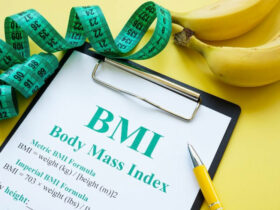When it comes to weight loss, exercise plays a crucial role alongside a healthy diet. Regular physical activity not only burns calories but also improves overall fitness and boosts metabolism. In this article, we will explore effective exercise strategies for weight loss and provide practical tips to help you get started on your fitness journey.
The Role of Exercise in Weight Loss
Exercise is an essential component of any weight loss plan. It helps create a calorie deficit by burning excess calories, which leads to weight loss. Additionally, exercise increases muscle mass, which further enhances your body's ability to burn calories. Regular physical activity also improves cardiovascular health, strengthens bones, reduces stress, and increases energy levels.
Types of Exercises for Weight Loss
To maximize weight loss and overall health benefits, it's important to incorporate a variety of exercises into your fitness routine. Here are some effective types of exercises for weight loss:
Cardiovascular Exercises
Cardiovascular exercises, also known as cardio or aerobic exercises, elevate your heart rate and increase oxygen consumption. Examples of cardiovascular exercises include running, brisk walking, cycling, swimming, and dancing. These activities help burn calories and improve cardiovascular fitness.
Strength Training
Strength training involves using resistance, such as weights or resistance bands, to build and tone muscles. Building muscle mass is important for weight loss because it increases your resting metabolic rate. Incorporate exercises like squats, lunges, push-ups, and weightlifting into your routine to strengthen and sculpt your body.
High-Intensity Interval Training (HIIT)
HIIT workouts involve short bursts of intense exercise followed by periods of rest or lower-intensity activity. This type of training boosts your metabolism, burns calories, and improves cardiovascular fitness. HIIT exercises can include sprinting, jumping jacks, burpees, and kettlebell swings.
Yoga and Pilates
Yoga and Pilates focus on flexibility, core strength, and body awareness. These exercises not only contribute to weight loss but also improve balance, posture, and overall well-being. Incorporating yoga or Pilates into your routine can help reduce stress and increase mindfulness.
Creating an Exercise Plan for Weight Loss
To make exercise a sustainable part of your weight loss journey, it's important to create a well-rounded and personalized exercise plan. Here are some key steps to consider:
Set Realistic Goals
Set realistic and achievable weight loss goals. Aim for a gradual and steady weight loss of 1-2 pounds per week. This approach is more sustainable and healthier in the long run.
Choose Activities You Enjoy
Select exercises that you genuinely enjoy. This will increase your motivation and make it easier to stick to your exercise routine. Whether it's dancing, swimming, hiking, or playing a sport, find activities that bring you joy.
Gradually Increase Intensity
Start with low to moderate intensity workouts and gradually increase the intensity as your fitness level improves. This helps prevent injuries and allows your body to adapt to the demands of exercise.
Schedule Regular Workouts
Consistency is key when it comes to exercise. Schedule your workouts in advance and make them a non-negotiable part of your routine. Aim for at least 150 minutes of moderate-intensity aerobic activity or 75 minutes of vigorous-intensity activity each week.
Include Variety
Incorporate a mix of cardiovascular exercises, strength training, and flexibility exercises into your weekly routine. This variety not only keeps you engaged but also ensures that you work different muscle groups and improve overall fitness.
Tips for Getting Started with Exercise
Starting an exercise routine can be challenging, especially if you're new to fitness. Here are some tips to help you get started:
Start Slowly
If you're new to exercise, start with low-intensity activities and gradually increase the duration and intensity. This allows your body to adapt and reduces the risk of injury.
Warm Up and Cool Down
Always warm up before your workout to prepare your muscles and joints for exercise. Likewise, cool down with gentle stretches to prevent muscle soreness and promote flexibility.
Listen to Your Body
Pay attention to your body's signals and adjust your workout intensity accordingly. If something feels painful or uncomfortable, modify the exercise or take a break. It's important to prioritize your safety and well-being.
Stay Consistent
Consistency is more important than intensity when it comes to exercise. Even if you can't commit to long workout sessions, aim for shorter, regular workouts. It's better to exercise for 30 minutes each day than to have one intense workout and be sedentary for the rest of the week.
Seek Professional Guidance
If you're unsure about where to start or how to perform certain exercises correctly, consider working with a certified fitness professional. They can design a personalized exercise plan and provide guidance to ensure you're on the right track.
The Importance of Nutrition
While exercise is crucial for weight loss, it should be complemented by a balanced and nutritious diet. Pay attention to your calorie intake and ensure you're consuming a variety of whole foods, including fruits, vegetables, lean proteins, whole grains, and healthy fats. Consult with a registered dietitian for personalized dietary recommendations.
Tracking Progress and Adjusting the Plan
Regularly monitor your progress to stay motivated and make necessary adjustments. Keep a record of your workouts, track your weight, and take body measurements. If you find that your current exercise routine is not yielding the desired results, consider modifying your plan or seeking professional advice.
Common Challenges and How to Overcome Them
Weight loss journeys can have their ups and downs. Here are some common challenges you may face andhow to overcome them:
- Lack of Motivation: Find a workout buddy or join a fitness class to stay motivated. Set small, achievable goals and reward yourself for reaching milestones.
- Time Constraints: Incorporate exercise into your daily routine by scheduling workouts in advance. Look for opportunities to be active throughout the day, such as taking the stairs instead of the elevator or going for a walk during lunch breaks.
- Plateaus: If you reach a weight loss plateau, shake up your routine by trying new exercises or increasing the intensity of your workouts. Also, reassess your diet to ensure you're still in a calorie deficit.
- Injury Risk: To minimize the risk of injury, always use proper form and technique during exercises. Listen to your body and rest when needed. If you do sustain an injury, seek medical attention and adjust your exercise routine accordingly.
- Emotional Eating: Emotional eating can sabotage your weight loss efforts. Find alternative coping mechanisms for stress, such as practicing mindfulness or engaging in hobbies. Seek support from a therapist or counselor if emotional eating becomes a persistent issue.
Unveiling the Wonders of Vitamin A: Everything You Need to Know
Conclusion
Exercise is an essential component of any weight loss journey. By incorporating a variety of exercises, setting realistic goals, and staying consistent, you can achieve your weight loss goals while improving your overall health and well-being. Remember to combine exercise with a nutritious diet for optimal results. Get started today and enjoy the benefits of an active lifestyle.
FAQs
- Can I lose weight just by exercising?
- Exercise plays a significant role in weight loss by creating a calorie deficit. However, combining exercise with a healthy diet is more effective for sustainable weight loss.
- How often should I exercise for weight loss?
- Aim for at least 150 minutes of moderate-intensity aerobic activity or 75 minutes of vigorous-intensity activity per week. Spread your workouts throughout the week for optimal results.
- What is the best time to exercise?
- The best time to exercise is whenever it fits into your schedule and you can commit to it consistently. Find a time that works best for you, whether it's in the morning, afternoon, or evening.
- Can I do exercises at home?
- Yes, there are numerous exercises you can do at home with little to no equipment. Bodyweight exercises, yoga, and HIIT workouts are great options for home workouts.
- How long does it take to see results from exercise?
- The time it takes to see results from exercise varies from person to person. Generally, you may start noticing improvements in your fitness levels within a few weeks, while significant weight loss results may take several months of consistent effort.














